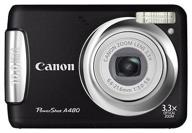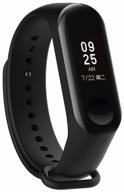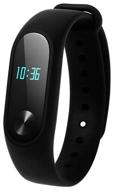
Review on Canon EOS 6D Wi-Fi Enabled Digital SLR Camera (Body Only) with 20.2 MP CMOS Sensor and 3.0-Inch LCD by Funahashi Riko ᠌

A nice option for the money, one of the best deals.
I am writing this review after upgrading from a cropped 650D to a brand new 6D Mark II. I primarily do Landscape, Travel, Urban (URBEX), Astrophotography and Reportage, but I want to delve into Portraits. Experience a little more than 4 years, I shoot only in M mode or B (for ultra-long exposures). My optics park: EF 24-105 F/4L IS USM EF 70-300 F/4-5.6 ver. III EF 15 F/2.8 Fisheye Sigma 15-30 F/3.5-4.5 EX ASPHERICAL IF DG Hellios 44-M4 new (58 mm F/2 – F/16) Jupiter 37A new (135 mm F/3.5 - F/22) Of course, I could have taken the first six from my hands and, probably, I would have saved a lot on this and would have lost a little, but I wanted to take a new, modern and technologically advanced camera, in which it absolutely satisfied me. Rotating screen, without which I have no life in landscape photography, excellent LiveView autofocus, Good DD, if you approach photography with your head, Raw files are gorgeous (I shoot only in them), ergonomics and a top screen that is personally useful to me. A very noticeable difference from the crop is that the optics have real focal lengths, there is no longer a 1.6 crop, I finally began to look at the world widely, but in the case of a telephoto it was certainly too much, but the resolution is enough to, in a pinch, crop the picture itself without strong losses, anyway, the Web does not need gigantic megapixel detailing. The depth of field began to be felt better at full frame, the old optics began to sing with more powerful bokeh. This camera is clearly not positioned as a professional tool, but rather for an enthusiast like me, to whom it will give great full frame capabilities along with modern technology and ease of use. All claims to it are only the desire of the consumer to save money and get more for cheap. I would also like to say that the camera is just a tool, thanks to which we make the final result - a photograph, and its quality and meaning depend only on the photographer and nothing else.
- 1. Full frame dynamic range after cropped 650D 2. Dual Pixel CMOS AF is a real opportunity to focus in LiveView and in video. 3. Swivel screen at full frame from Canon. The screen is already significantly better than their first touch screen in the 650D, there is a glove mode, and there is also an electronic level function, which greatly helps in the dark to more accurately set the horizon during framing. 4. Timelapse built into the camera. There is an interval shooting mode with recording frames on a flash drive, and there is immediately in the video. It does not click the shutter immediately in the video and you can shoot any time-lapses immediately in 4K with a good opportunity for color correction in the video. 5. Electronic stabilization for video. Two levels of stabilization with minimal image crop and stronger crop. The minimum crop copes with a bang, especially with an IS lens, in my case 24-105L IS USM of the first version. 6. Full HD 60/50 Fps look great. I definitely didn’t take it for video, but it’s very nice after 30 frames, and even with a stub. 7. Ergonomics and control have become better. A lot of functions are always at hand, two wheels, a joystick, a swivel touch screen. Fits well in the hand, the grip is very comfortable. It is possible to make camera settings via WiFi. Connect to WiFi by touching the phone to the camera via NFC. 8. The battery is really difficult to discharge. Backwards compatible with LP-E6, which is used in a huge number of Canon cameras. 9. Moisture-dust protection is very out of place. I used the 650ku almost, not sitting in a puddle under a downpour, as well as when shooting in caves, dungeons and abandoned places, and nothing happened to it, except for a filthy matrix, which is easy to clean, and here the margin of safety will be added to this) 10. GPS geolocation is a very useful thing, after a long trip it is sometimes extremely difficult to find on the maps in the forests where which shot was taken. There is a mode of constant battery gluttony, even off. state and mode where periodically in the on state requests a signal.
- 1. A phase detection autofocus sensor from a crop camera, the points are too shifted to the center of the frame, which makes it more difficult to focus through the viewfinder, but it hits the points perfectly. The viewfinder itself has a coverage of 98%, but a rather strong zoom of 0.71x, which makes it difficult to shoot at wide angles (24mm and wider). 2. The inability to power the camera from the USB connector, which is already in the EOS R, of course there is an option from the Chinese with a dummy battery and USB output, well, it's more complicated. It is also impossible to charge the original charger via USB, but here the Chinese save us again, they invented it a long time ago. The Mini USB connector itself is outdated, and even the USB 2.0 speed is not included in the kit (in 5D mark IV - USB 3.0). Of course, they were greedy with speed. 3. One SD slot. 4. 1/4000, but I would like 1/8000. When buying this camera, you should not expect too much from it, do not forget that there is a 5D mark IV, which Canon also needs to sell. I would like to go through the cons that are written in other reviews: 1. 4K? There are other solutions for this, more tailored for video, and Canon has a 5D Mark IV. If 4K were added here, then only as a plug with a strong crop and quality would not be discussed, which would be even more negative. 2. Bad DD or exposure meter misses - Learn to shoot! Find the function for selecting the metering mode, if the third-party lens skews, then turn on the exposure meter correction for the required number of stops, but in general, watch the frame so as not to expose in the bright area when half of the frame is dark, for this there is an HDR mode with 3/5/7 stops , it’s quite possible to take it off your hands. 3. High ISOs are noisy. This comes from a misunderstanding of the signal-to-noise ratio. The more signal, the less noise, here you can safely shoot up to 6400 in the city in equal and pull out adequate photos. In the forest or in the park away from the lights, you will have wild noise at ISO100, and under the lights at ISO6400 you will get a good shot.
New products
Comments (1)

Similar reviews
Top products in 📷 Digital Cameras

Canon PowerShot A480 camera, black

108 Review

Nikon D3100 DSLR Camera Body (Kit Box) - No Lens Included, International Version with No Warranty

298 Review

Canon EOS 60D: 18MP CMOS Digital SLR Camera Body - Your Next Photography Companion

125 Review

Discontinued Canon EOS 7D Digital SLR 📷 Camera Body Only with 18 MP CMOS Sensor

88 Review






